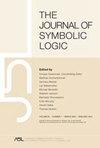Dampak Jangka Pendek Penjarangan Hutan Campuran terhadap Keanekaragaman Serangga Terbang di KPH Banten (Short-Term Impact of Thinning of Mixed Forest on the Diversity of Flying Insects in Forest Management Unit of Banten)
IF 0.6
3区 数学
Q3 LOGIC
引用次数: 0
Abstract
Forest thinning is a sylvicultural practice that aims to provide better growth space for increasing tree growth and stand quality. Forest thinning is a form of forest disturbance that has an impact on the forest environment, including flying insects . This study aim ed to assess the impact of thinning of mixed forest stands on the diversity of flying insect s . Eight circular plots of 0.1 ha were laid out systematically on thinning plots of 15.3 ha. Parameters observed in the plot included environment factors (stand composition, temperature, humidity, and canopy cover), abundance, species composition, and biodiversity index of flying insects (diversity index, species richness index, evenness index, and similarity index). The sweep net was used to collect the flying insects . Mann-Whitney test was used to compare the index of bio diversity of flying insects before and after forest thinning. Forest thinning caused a decrease in abundance , species composition , diversity index, richness index, and evenness index of flying insects. Forest thinning led to a decrease in the abundance of herbivorous flying insect s and an increase in the abundance of predatory flying insects . Flying insect species found before thinning was not identical to those after thinning. Keywords: diversity index, flying insect, forest ecosystem, forest tending森林间伐是一种造林实践,旨在为提高树木生长和林分质量提供更好的生长空间。森林间伐是森林扰动的一种形式,对森林环境有影响,包括飞虫。本研究旨在评价混交林间伐对飞虫多样性的影响。在15.3公顷的间伐地块上系统地布置了8块0.1公顷的圆形地块。样地观测参数包括环境因子(林分组成、温度、湿度、冠层盖度)、丰度、物种组成和飞虫生物多样性指数(多样性指数、物种丰富度指数、均匀度指数和相似度指数)。用扫网收集飞虫。采用Mann-Whitney检验比较了森林间伐前后飞虫生物多样性指数。森林间伐导致飞虫的丰度、种类组成、多样性指数、丰富度指数和均匀度指数下降。森林间伐导致草食性飞虫的丰度减少,而掠食性飞虫的丰度增加。间伐前发现的飞虫种类与间伐后发现的不相同。关键词:多样性指数,飞虫,森林生态系统,森林抚育
本文章由计算机程序翻译,如有差异,请以英文原文为准。
求助全文
约1分钟内获得全文
求助全文
来源期刊
CiteScore
1.20
自引率
16.70%
发文量
79
审稿时长
6-12 weeks
期刊介绍:
The Journal of Symbolic Logic publishes research in mathematical logic and its applications of the highest quality. Papers are expected to exhibit innovation and not merely be minor variations on established work. They should also be of interest to a broad audience. JSL has been, since its establishment in 1936, the leading journal in the world devoted to mathematical logic. Its prestige derives from its longevity and from the standard of submissions -- which, combined with the standards of reviewing, all contribute to the fact that it receives more citations than any other journal in logic.

 求助内容:
求助内容: 应助结果提醒方式:
应助结果提醒方式:


